Roasted garlic is sweet, and complex, without the burning sensation of raw garlic. It is cooked at low temperatures that caramelize the sugars, naturally occurring in all alliums. This gives roasted garlic a complex, delicious, warmth, not found on the supermarket shelf. Top chefs know this and incorporate roasted garlic in sauces, soups, dips, vegetable and meat dishes. But you don’t have to spend big money at a fancy restaurant to enjoy the flavours of roasted garlic. It’s easy to make it at home and doesn’t even take extra time. You can roast garlic while you bake other parts of the meal, in the same oven. So stop holding back and add this easy, epicurean flavour to your home cooking repertoire.
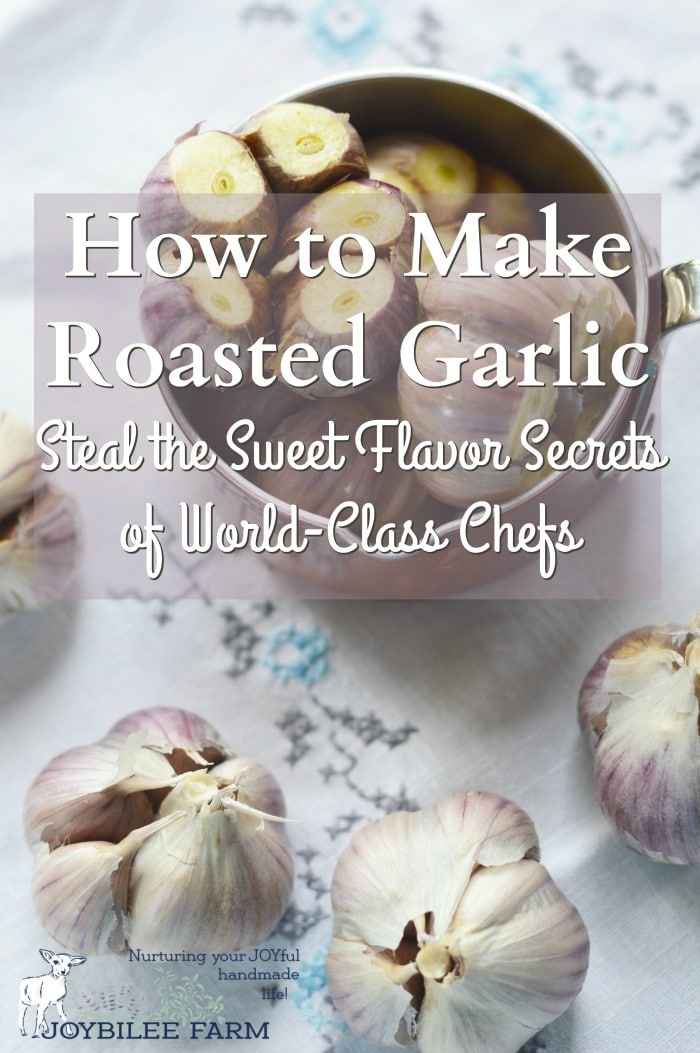
How to make roasted garlic
Yield: 4 tablespoons
Ingredients:
4 heads of raw garlic
1 tablespoon virgin olive oil
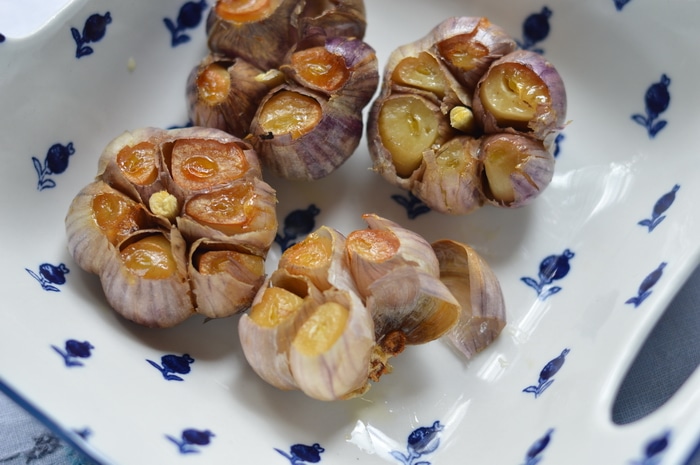
Directions:
Peel the outer wrapping on 4 heads of garlic to expose the still wrapped cloves. Leave the cloves attached to the head of garlic.

Cut the top 1/8th inch or so off the top of the heads to expose the inner clove. Place the garlic cloves in a shallow baking dish and drizzle with olive oil. Put the dish of prepared garlic cloves in a moderately warm oven (325F) while you are baking other food. Allow the garlic to bake slowly for about 20 minutes, or until the inside of the garlic clove is soft and easy to mash with a fork.
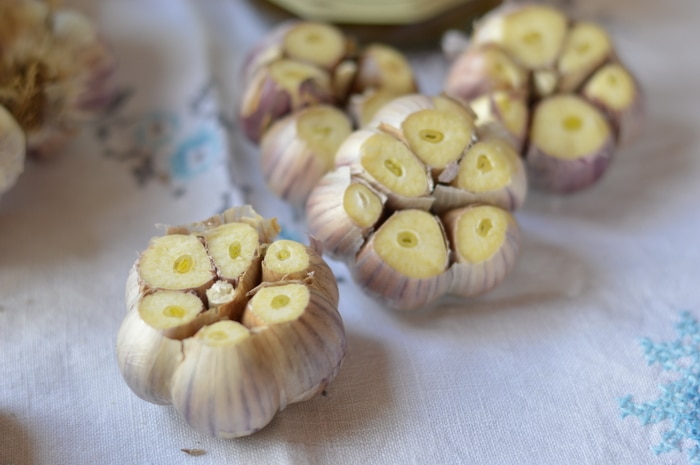
Remove the roasted garlic from the oven.
Allow it to cool enough so that it can be handled without burning your fingers.
Split each clove with a knife and squeeze the soft pulp into a shallow bowl. Do this with each clove.
Mash cloves together using a fork. Add a little bit more olive oil to make mashing the cloves easier.
Put the roasted garlic in a 4 ounce mason jar with a lid and keep it in the fridge until you are ready to use it. It will last a week in the fridge. You can freeze it if you need it to last longer.
It’s now ready to use.
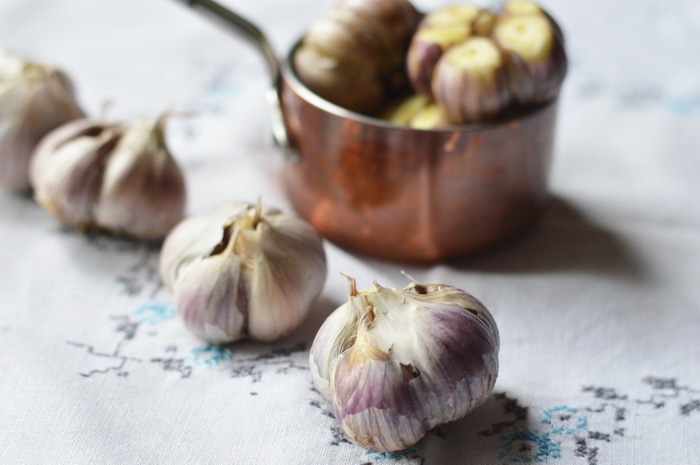
Roasted garlic is an ingredient
Use it to expand your flavor repertoire in cooking. It adds a sweetness and savour to dishes that it is used in. It’s fabulous on pasta, rice, and potatoes making these bland foods taste wonderful. It’s a compliment to dressings and sauces raising their status to gourmet quality. Add roasted garlic any place you might use raw garlic for a less biting and more complex flavour.
Rather than add it at the beginning of the cooking period add it in the last 5 minutes of cooking. High temperatures will make the subtle flavour of caramelized garlic sharp and bitter.
When adding raw garlic to cold food blend it in well, so that the flavors of the caramelized garlic are distributed throughout the sauce or dressing. A Magic Bullet blender is an asset when making salad dressings and smooth sauces.
Roasted garlic is the missing ingredient in your kitchen.
While you might be tempted to eat it warm, right from the oven, or to take a bit, right out of the jar, while you are cooking, the highest use for roasted garlic is to incorporate it into your cooking as you would any other herb or spice.
How to use roasted garlic?
- Spread it on french bread when making garlic toast
- Spread it on pizza, as a topping
- Add it to salad dressings (Try: 1/4 cup virgin olive oil, juice from 1 lemon, zest from 1 lemon, 1 tablespoon of roasted garlic, 1/2 teaspoon of grainy mustard, 1/2 teaspoon Celtic salt, a pinch of dried oregano)
- Make a dip with 2 tbsp roasted garlic, 1/2 cup sour cream or yoghurt, and 1/2 cup of mayonnaise
- Top Ramen noodles or angel hair pasta with butter or olive oil and roasted garlic, with a sprinkling of freshly grated Parmesan cheese.
- Add roasted garlic to hummus dip instead of raw garlic for an increase in sweetness and complexity.
- Spread it over chicken or turkey skin in the last 15 minutes of roasting
- Mix it with lime juice and spread it over fish, just before cooking
- Use it instead of raw garlic in pesto.
- Mix it into peanut butter along with a little lime juice and cayenne pepper and make a peanut dipping sauce.
- Mix some in cream cheese and spread it on crackers or celery
Use your imagination. It’s so easy that you can make it while you are waiting for rice or pasta to cook. Make extra and save some in the fridge for salad dressings, and veggie dips this week.
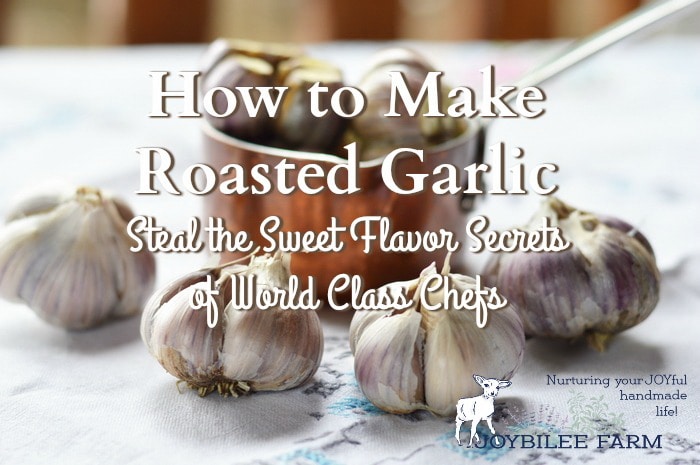
Try these other recipes that use roasted garlic as an ingredient
Salad dressings using roasted garlic
Other condiments using roasted
Garlic Cauliflower Alfredo Sauce
Salads with roasted garlic
Sides with roasted garlic
Cauliflower Mash with Ricotta and Garlic
Garlic Butter Roasted Butternut Squash

Main dishes using roasted garlic
Zucchini Noodles with Garlic and Tomatoes from Amy at Tenth Acre Farm
Asiago Garlic Cauliflower Soup
Root Vegetable Power Bowl with Garlic Tahini Dressing
Garlic and Asparagus Soup
Creamy Garlic Cauliflower Soup
Caramelized Onion and Garlic Bisque
Print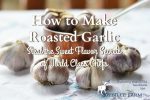
How to Make Roasted Garlic at Home and Steal the Sweet Flavor Secrets of World Class Chefs
- Prep Time: 5
- Cook Time: 20
- Total Time: 25 minutes
Description
Roasted garlic is sweet, and complex, without the burning sensation of raw garlic. It is cooked at low temperatures that caramelize the sugars, naturally occurring in all alliums.
Ingredients
- 4 heads of raw garlic
- 1 tablespoon virgin olive oil
Instructions
- Peel the outer wrapping on 4 heads of garlic to expose the still wrapped cloves. Leave the cloves attached to the head of garlic.
- Cut the top 1/8th inch or so off the top of the heads to expose the inner clove. Place the garlic cloves in a shallow baking dish and drizzle with olive oil.
- Put the dish of prepared garlic cloves in a moderately warm oven (325F) and allow the garlic to slowly bake for about 20 minutes, or until the inside of the garlic clove is soft and easy to mash with a fork.
- Remove the roasted garlic from the oven.
- Allow it to cool enough so that it can be handled without burning your fingers.
- Split each clove with a knife and squeeze the soft pulp into a shallow bowl. Do this with each clove.
- Mash cloves together using a fork. Add a little bit more olive oil to make mashing the cloves easier
Notes
Use roasted garlic as an ingredient in salad dressings, hummus, seasoned butter, and alfredo sauce


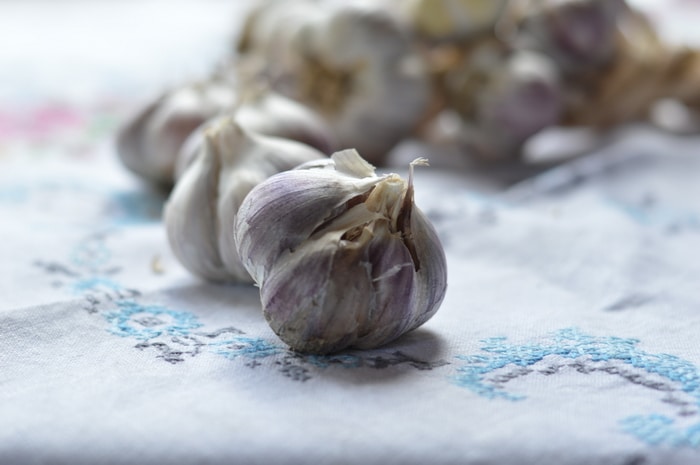

I grow hard neck but I don’t think it matters for roasted garlic. In fact soft neck would be easier to separate the cloves after baking.
And the garlic I just planted won’t be ready till late spring! Is there a preference for which type of garlic to use? Soft neck, hard neck, elephant?